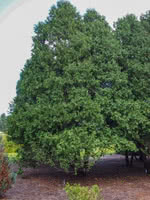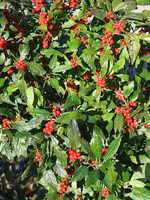Mon-Fri 9am - 5pm Mountain time
Eastern White Cedar (Arborvitae) vs Winterberry
Thuja occidentalis
Ilex verticillata
CUSTOM GROW
Eastern White Cedar is a slender growing conifer often used as a decorative tree or a hedge. This tree is an effective privacy screen even in winter and a great long term solution to urban crowding or a drab yard.
Winterberry is a small shrub that produces large quantities of bright red berries that remain on the plant through the fall and into the winter. Adding this shrub to your yard will give it a unique splash of color and attract birds, especially after the leaves drop.
Note: although the foliage is attractive on its own, you need at least one male plant near your female plants or they won't produce berries.

